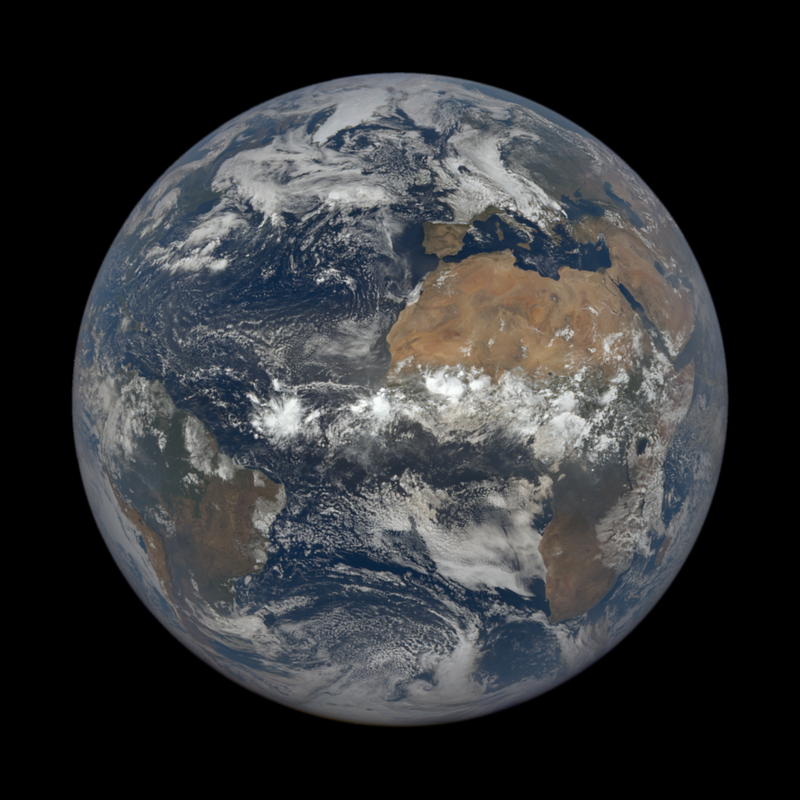Chronicles of Earth: An Epic Voyage with DSCOVR's Eyes
Written on
Chapter 1: The Cosmic Lens on Earth
The boundless expanse of the universe conceals countless wonders, including stunning views of our cherished blue planet. NASA's spacecraft diligently observe and document Earth's dynamic transformations, rich landscapes, and innate beauty. One notable satellite, DSCOVR, is equipped with the Earth Polychromatic Imaging Camera (EPIC). Stationed at Lagrange Point 1, it offers an unparalleled perspective of the sunlit portion of Earth.
The EPIC camera on DSCOVR serves as a remarkable link to the universe, granting us a view few have had the chance to experience.
Section 1.1: Obtaining Your NASA API Key
Before embarking on this stellar adventure with code, you'll need to secure an API key from NASA. Here’s how to do it:
- Visit the NASA API Portal: NASA Open APIs.
- Click the “Generate API Key” button.
- Fill in the required details and register.
- Once registered, you will receive your personal API key. Keep it safe for future use!

As we gaze at our planet from the vastness of space, we witness a stunning tapestry of vibrant terrains and fluctuating weather patterns. This spectacle evokes a deep sense of wonder—a visual poetry that showcases Earth’s magnificence and complexity. Armed with NASA’s powerful API, I set out on a time-limited mission to document Earth’s visual narratives over two revolutions around the sun.
Section 1.2: The Space-Age Script
Here’s the code that fueled this celestial exploration:
import os
import requests
import json
from datetime import datetime, timedelta
def fetch_earth_imagery(lat, lon, date=None, dim=0.025, api_key='YOUR_API_KEY_HERE'):
params = {
"lat": lat,
"lon": lon,
"dim": dim,
"date": date,
"api_key": api_key
}
response = requests.get(base_url, params=params)
return response.json()
def download_image(data, date, folder='images'):
if not os.path.exists(folder):
os.makedirs(folder)image_url = data['url']
response = requests.get(image_url)
with open(os.path.join(folder, f'{date}.jpg'), 'wb') as f:
f.write(response.content)
# Chronicle dates in 2021 and 2022
start_date = datetime(2021, 1, 1)
end_date = datetime(2022, 12, 31)
delta = end_date - start_date
dates = [(start_date + timedelta(days=i)).strftime('%Y-%m-%d') for i in range(delta.days + 1)]
# Zoom into specified coordinates
lat = 1.5
lon = 100.75
for date in dates:
print(f"Fetching celestial shot for {date}...")
data = fetch_earth_imagery(lat, lon, date=date, api_key='YOUR_API_KEY_HERE')
if 'url' in data:
download_image(data, date, folder='earth_images')else:
print(f"No cosmic capture for {date}.")
Before you begin, ensure to replace ‘YOUR_API_KEY_HERE’ with your actual NASA API key.
Chapter 2: Capturing Earth through Time
Each run of the script invites you to witness a moment suspended in the cosmic ballet of time. At the coordinates (lat=1.5, lon=100.75), near the Equator, you can expect vibrant climatic displays and a spectrum of colors from above. Some days, the area may be shrouded in mist, with clouds playfully obscuring the view. On other occasions, Earth reveals its brilliant blues and lush greens.
However, space does not guarantee continuous visibility. There may be days when the cameras fail to capture an image, prompting our system to respond: ‘No cosmic capture for [date].’
As this journey through time draws to a close, keep in mind that it is more than an archive of Earth’s moods. It stands as a testament to the rhythm of the cosmos and our relentless quest to document, comprehend, and feel a deeper connection to our celestial home.
Dear cosmic traveler, if this journey through the stars resonated with you, please shower us with applause as if it were a meteor shower. As we return to the digital realm of Medium, don’t forget to follow for more cosmic narratives and share your thoughts in the comments. Each comment shines like a star in this vast Medium universe, illuminating this writer’s world.
Safe travels until our next stellar encounter! 🌌